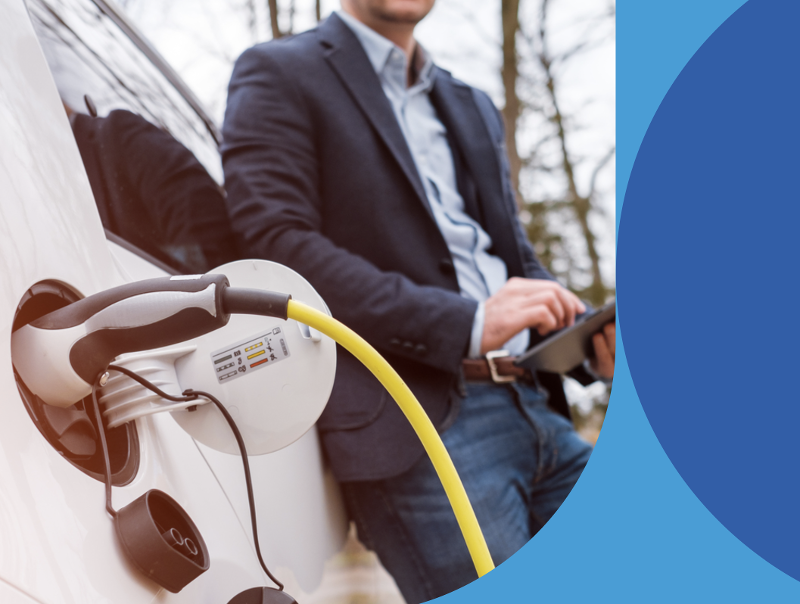This blog post is part two of our look at NIST's proposed cybersecurity framework for EV charging infrastructure. Please click here for a discussion of the mission objectives of this proposed cybersecurity framework.
The electric vehicle (EV) market is growing rapidly, and with it, the need for a secure and reliable charging infrastructure. The proposed NIST cybersecurity framework for electric vehicle infrastructure provides a comprehensive set of guidelines for organizations to follow in order to protect their EV charging systems from cyber threats.
The framework is based on the five functions of the NIST Cybersecurity Framework: Identify, Protect, Detect, Respond, and Recover. These functions are aligned with the typical lifecycle of a cyber incident, from the initial identification of a threat to the final recovery from an attack. Read on, and be sure to watch the video (below).
The first step in the NIST cybersecurity framework is to identify the assets that need to be protected. This includes the EV charging stations themselves, as well as the networks and systems that connect them. Organizations should also identify the potential threats to these assets, such as malware, denial-of-service attacks, and physical attacks.
Kajeet's Insights product can help organizations identify the assets that need to be protected by providing visibility into the EV charging network. Kajeet's Insights product provides real-time visibility into network traffic, which can be used to identify unauthorized access or malicious activity. For example, Kajeet's Insights product can be used to identify a charger that is being accessed from an unusual IP address or a charger that is sending a large amount of data.
Kajeet's managed firewall can also help organizations identify assets that need to be protected. Kajeet's managed firewall can be configured to block unauthorized access to specific assets or to specific ports. This can help to prevent unauthorized users from accessing sensitive data or from disrupting EV charging operations.
Once the assets and threats have been identified, organizations can put in place measures to protect them. This includes implementing security controls such as firewalls, intrusion detection systems, and access control lists. Organizations should also train their employees on cybersecurity best practices.
Kajeet's Sentinel -- included as a part of every Kajeet solution -- can help organizations protect their EV charging systems from cyber threats by providing a variety of security features, such as firewalling, intrusion detection, and data encryption. For example, Kajeet's managed firewall can be configured to block unauthorized access to the EV charging network. Kajeet's intrusion detection system can be used to detect suspicious activity on the network, such as unauthorized access or malicious activity. Kajeet's data encryption solution can be used to encrypt sensitive data, such as customer payment information.
The next step is to detect any security incidents that do occur. This can be done through monitoring of the network for suspicious activity, as well as through vulnerability scanning of the EV charging systems.
Kajeet's Sentinel Insights product can help organizations detect security incidents by monitoring the network for suspicious activity. Sentinel Insights can be used to detect unauthorized access, malicious activity, and data exfiltration. For example, Sentinel can be used to identify a charger that is being accessed from an unusual IP address or a charger that is sending a large amount of data.
Sentinel's intrusion detection capabilities can also help organizations detect security incidents. The intrusion detection system can be configured to alert organizations to suspicious activity, such as unauthorized access or malicious activity.
Kajeet's 24/7/365 support can help organizations respond to security incidents quickly and effectively. Kajeet's support team can help organizations to isolate the affected systems, contain the damage, and restore operations.
For example, if a charger is compromised, Kajeet's support team can help the organization to isolate the charger from the network, identify and mitigate the vulnerabilities that were exploited, and restore the charger to operation.
Kajeet does not remove malware, but we can help organizations to contain the damage by isolating the affected systems and identifying the vulnerabilities that were exploited. By taking these steps, organizations can reduce the impact of a security incident and minimize the damage.
The recover function includes the following activities:
The recover function is an important part of the NIST cybersecurity framework. By implementing the recover function, organizations can reduce the impact of a cyberattack and minimize the damage.
The NIST cybersecurity framework for electric vehicle infrastructure provides a comprehensive set of guidelines to protect EV charging systems from cyber threats. By following the framework of Identify, Protect, Detect, Respond, and Recover functions, organizations can ensure the security and reliability of their charging infrastructure. Kajeet's Sentinel offers real-time visibility and protection against unauthorized access, with security features such as firewalling, intrusion detection, and data encryption. Furthermore, Kajeet's 24/7/365 support assists in quick and effective incident response, helping to isolate affected systems and restore operations. Implementing the recover function allows organizations to assess the impact of incidents and communicate with stakeholders, ultimately minimizing damage.
We'd love to talk with you about your EV charging infrastructure solution and how Kajeet already has the tools you need for multi-carrier connectivity, management, and the cybersecurity functions outlined in the NIST framework.


